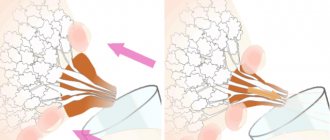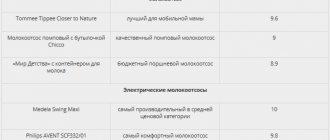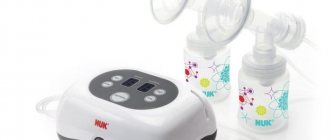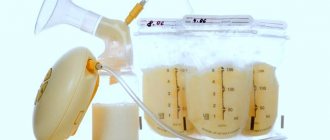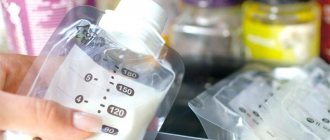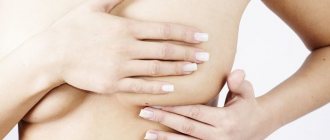Young mothers often face the problem of how to pump their breasts. After the first pregnancy, due to too much or insufficient milk, infrequent feeding and other reasons, lactostasis occurs. That is, the milk ducts become clogged with milk clots, which impede the movement of milk. The result is chest pain, migraines and joint pain. This does not affect the condition of the baby or the quality of the milk.
Young mothers often face the problem of how to pump their breasts.
Lactostasis is not a serious disease, but its consequences can be very dangerous. If breast milk is not expressed in time, the clots will fester and mastitis will occur. And only surgery can cure it. Mastitis differs from lactostasis by increased body temperature (up to 40 ° C) and severe pain. If the temperature does not rise above 37 °C, then there is no need to sound the alarm. You can consult your doctor to avoid complications. But panic in this situation is inappropriate.
How to prepare your breasts for pumping
The surest way to get rid of lactostasis is to express breast milk with your hands. Before this, you need to prepare your breasts, and between pumping you need to do compresses, massage, etc. Such manipulations will help get rid of blockages faster. There are quite a few methods of preparation, but for each woman they are selected individually:
- Short warming massage. The chest should be rubbed with your fingertips in a circular motion for 15-20 minutes. This method is very popular as it suits many women.
- Apply a towel moistened with warm water to your chest for 5-10 minutes.
- Take a warm, relaxing shower.
- Bend over and shake your chest. This method may look strange, but sometimes it works.
- Think about your baby or spend some time with him before pumping. This is a psychological technique that should awaken the maternal instinct. This way the milk will flow to the mammary gland, and it will be much easier to strain it.
Preparing the breast for pumping is very important. Without preliminary manipulations, additional pain may occur and there is a risk of damage to the nipple. Do not neglect the preparatory stage.
Expression technique according to Marmet
The movement indicated by pink arrows is very important. First, you seem to grab the milky sinuses, which lie deep under the areola, and only then roll your fingers over them.
If you press and pull on the nipple itself, it will be much more difficult to express the milk - it remains deeper, in the depths of the breast
Important points
Attention: When expressing breast milk with your hands, your fingers should not fidget on the skin, but they should remain in one place. This is to avoid chafing of the chest.
- The first few minutes during pumping, breast milk may be released very weakly - drop by drop, it is very important not to stop pumping, and after some time the milk will flow in trickles.
- When the milk has stopped flowing, you can move your fingers to a different position or move to the second breast (and then from there again to the first)
- You need to express one breast for at least 5-6 minutes until the milk stops flowing; then move on to pumping the second one. Correct and complete pumping takes on average about 20-30 minutes. Don't try to express milk in less time.
- When pumping with your hands, you don’t need to put in much effort and don’t squeeze your breasts too hard.
- There is no need to pull or press too hard on the nipple - this will not promote milk flow, but on the contrary, can lead to cracked nipples.
If you experience pain when pumping, something is going wrong. Do not continue to avoid injury.
Important! If you are expressing for the first time, consult with your doctor or lactation consultant first to show you how to express properly.
New breastfeeding mothers always want to squeeze all the milk out of the nipple, even if they theoretically know that there may only be leftovers there. And yet, sometimes it seems that at least something is flowing from there, while the torment of the breast itself can be completely fruitless. Just don’t imagine that you don’t have milk, and leave the nipple alone. If you have recently given birth or have simply never pumped before, it may be difficult for you at first - you need to “decant” your breasts. In this case, you may feel unpleasant, even if you are doing everything right. Just before you start pumping, spend 15 minutes on a massage (you can combine it with a shower), and things will go much easier.
Of course, there is a great risk of running to the store for a breast pump, which, it seems, will do everything on its own. Once you press the button (or crush the pear), a liter of milk will miraculously pour out of your chest... If you think so, disappointment is inevitable. An undeveloped breast will be as difficult for your breast pump to extract milk as it is for your hands. However, your hands are much more gentle. Frequent use of breast pumps can cause breasts to swell and areolas to grow in size, while there are no side effects to your own hands.
How to properly store expressed milk:
Breast milk should be stored in a closed container at room temperature for about 6-8 hours, and in the refrigerator for up to 2 days. Read in detail about storing expressed milk in this article. Important nuances when pumping: we wrote here what you definitely need to know.Next: How to express your breasts with a breast pump?
Manually expressing breast milk (video)
Expressing milk by hand
After the breasts are prepared, you can express the stagnant milk. Before doing this, you need to wash your hands with soap and prepare a container for milk. If it will be used as food in the future, the dishes must be clean. When pumping, it is recommended to take a comfortable position so as not to create an additional stressful situation.
First you need to place your thumb on the upper border of the areola, the remaining 4 fingers on the lower border, under the nipple. Use the pad of your thumb to move downwards towards the nipple and back. The finger should slide without leaving the chest. At the same time, the fingers that are located below should lightly compress the mammary gland. You need to connect your index finger and thumb and pull the nipple forward a little.
Milk will be released slowly, in small drops. If it continues to drip for several minutes, something is going wrong. You need to either increase your strength or repeat the training again. When milk begins to flow out, you can move your palm in a circle. This will allow you to strain out any stagnant milk in your entire breast.
Lactostasis is not a serious disease, but its consequences can be very dangerous.
Using a breast pump
A breast pump seems like an ideal assistant for expressing milk at home, but not for lactostasis. Congestion of milk in the breast requires not just expressing milk, but also removing the blockage. In no case should you fight lactostasis only with a breast pump; if the child is not breastfeeding and additional procedures are not carried out (massage, compresses, etc.), it will not help at all. It is better to consult a specialist whether it can be used or not.
If the doctor gives the go-ahead, then you need to know how to properly strain breast milk with a breast pump. After purchase, the breast pump should be boiled. Before pumping, you need to wash your hands with soap and rinse your breasts with warm water without soap. It is recommended to drink warm tea or water to improve milk flow. Prepare a container for expressed milk. Prepare your breasts for pumping.
Choose a funnel of a suitable size: there should be a little space between the nipple and the wall, otherwise the procedure will cause discomfort. Place the funnel on your chest and select the optimal speed. The breast shield should fit snugly against your breast; you can wet your skin with a towel before pumping. During the procedure, you need to massage your breasts a little. The body position should be comfortable; you can tilt your body forward slightly. You need to express until the breasts become soft to the touch, usually the procedure lasts no more than 15-20 minutes.
Causes of milk retention in the postpartum period
The formation of congestion in the mammary glands not only creates an obstacle to breastfeeding, but also causes a woman a lot of discomfort and even pain. The main manifestations of stagnation of breast milk are hardening of the mammary glands, the appearance of soreness and a feeling of fullness. When pressing on such a breast, small portions of breast milk may drip out.
The main reasons for the formation of congestion in the mammary glands are:
- Irregular attachment of the baby to the breast;
- Failure to comply with breastfeeding techniques;
- An insufficiently developed sucking reflex in a child, as a result of which the mammary glands do not empty completely.
Another equally probable cause of lactostasis is excessive production of breast milk in the first few days after birth.
Folk remedies for lactostasis
Traditional medicine can help with milk stagnation. All recipes are gentle and will not cause harm, but this does not mean that you can neglect the help of doctors.
- Cabbage compress. The cabbage leaf needs to be washed, mashed or beaten and applied to the chest. It is recommended to use it after each feeding. It should be either cold or warm. This procedure will help relieve swelling and normalize body temperature, since due to lactostasis either the overall body temperature or the chest temperature increases.
- Compress using honey. You need to prepare a tight dough that will hold its shape well from honey and flour. Form a cake about 0.5 cm thick and apply to your chest. Sometimes honey without additives or honey spread on a cabbage leaf is used.
- Cottage cheese compress. Cold low-fat cottage cheese is used, it must be wrapped in gauze and applied to the chest.
- Warming up will help defeat stagnant lactostasis. The heat will help clear the blockage. You can use a UV lamp, heating pad or other dry heating. Sometimes rice or salt heated in the oven or in a frying pan, wrapped in a towel or gauze, is used. But the temperature should not be too high, optimally 50-60 °C. You can also take a warm shower or bath.
- Chamomile tincture. 2 tsp pour a glass of boiling water over chamomile flowers and leave in a warm place for 4 hours. You need to moisten a towel in the warm tincture and apply it to your chest.
- Infusion of flax seeds. 1 tsp flax seeds need to be poured with a glass of boiling water, let it brew for several hours until mucus appears. Moisten a towel in the warm tincture and apply to the mammary gland.
- Onion compress. Bake 1 onion in the oven and cool to a comfortable temperature. Warm onions should be applied to the breast after breastfeeding. Be sure to change the bulbs after each procedure.
- Compress with vodka. Dilute vodka with 40% alcohol content with water in a 1:1 ratio. You need to moisten gauze, a towel or any rag in the solution. Place this on your chest and wrap it in plastic. It is recommended to wear a bra, a jacket and wrap a scarf around your chest, that is, to insulate yourself as much as possible. The compress should be kept on all day and removed before bed. It needs to be changed every 3-5 hours. But this method is not suitable for feeding, as the smell of vodka will frighten the baby.
Folk remedies will help resolve lactostasis only at the beginning of the disease. If they are used for more than 3 days and do not produce results, you should immediately go to the hospital. The doctor needs to explain the situation, tell how lactostasis was treated and for how long.
What is the best way to express (video)
Massage for lactostasis
Since it is impossible to strain milk stagnation without eliminating the blockage of the ducts, you need to get rid of it with the help of massage. It stimulates the production of the hormone oxytocin, which regulates the release of breast milk. Massage also improves blood flow to the breasts, enhances lactation, and reduces pain due to muscle relaxation.
Before the massage you need to wash your hands and chest. In addition to preparing for massage or pumping, the breasts need to be washed 2-4 times a day. The use of towels is not recommended; it is better to replace them with soft napkins.
It is better to massage with castor oil, which will help the cracks heal faster. You should apply the oil to your hands, not to your chest. After the procedure it must be removed.
The massage should last at least 10 minutes. Movements should be soft, circular. First you need to massage your breasts clockwise. Then make spiral movements from the base of the breast to the nipple. After this, move on to stroking. This procedure should not be painful. You should complete the manipulations with a warm shower. Under running water you need to wash off the oil in a circular motion, this will be an excellent end to the massage.
General recommendations
Your baby can help you pump the breast. It must be applied in a special way: the area of stagnation should be under the child’s lower jaw. If you cannot find the place of stagnation, you can simply constantly change your position when breastfeeding. You will have to feed while standing, bending over the baby. Sitting and lying down are uncomfortable, but effective. It is recommended to feed not according to a schedule, but according to the child’s wishes. During feeding, you need to massage the second, free breast, and then completely express the milk.
Folk remedies will help resolve lactostasis only at the beginning of the disease.
The diet should contain an increased amount of healthy fats. Oily fish, flaxseed or olive oil and dairy products (but not cow's milk) are suitable. It is necessary to follow the nutritional rules for a nursing mother. Eliminate potential allergens, alcohol, cigarettes, etc. Meals should be regular, but portions should be small. You should avoid foods high in GMOs, preserves, etc.
Sometimes you can do simple exercises. Swing your arms to the sides, up, down, circular movements, etc. You definitely need to buy a comfortable bra. It is recommended to change positions during sleep.
Stagnant milk after childbirth is a common problem, so it is unlikely that anyone in the hospital will pay special attention to it. By expressing milk, doing massage, exercise and following a diet, you can get rid of lactostasis on your own. This does not mean that you can not inform the doctor. The optimal period for self-medication is 2 days. If more time has passed and stagnation remains, you should immediately consult a doctor.
When does it make sense to pump?
- Forced separation from a child. If a nursing mother is busy studying, at work or is sick, then in order for lactation to continue, she must regularly express milk and feed her baby from a bottle.
- Expressing milk for long-term storage in the refrigerator. In cases where the mother faces a long course of medication or is forced to stop breastfeeding for some reason, it makes sense to express milk and freeze it in the refrigerator. Breast milk is a very valuable product for a child, important for his normal health and development.
